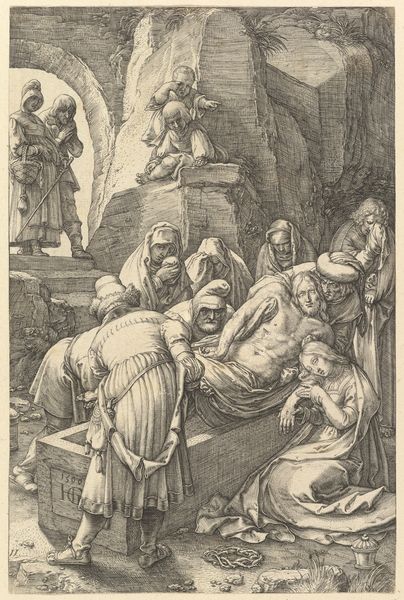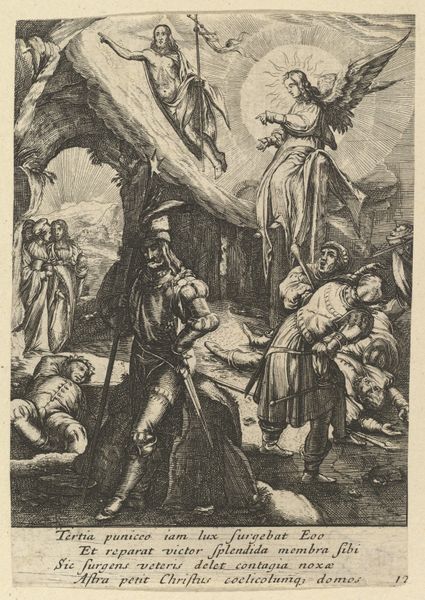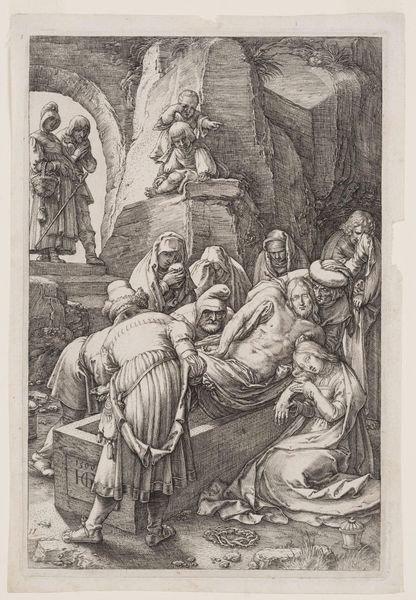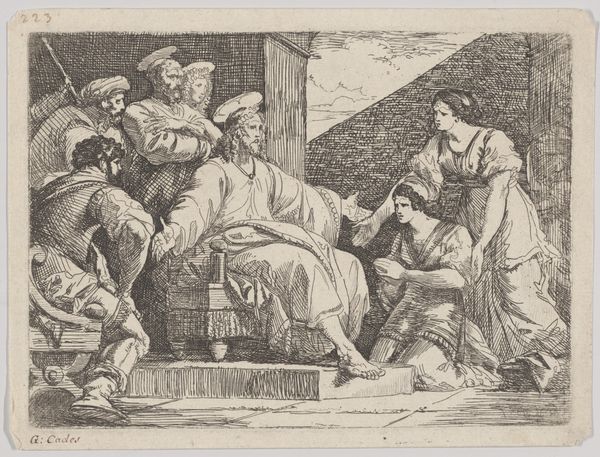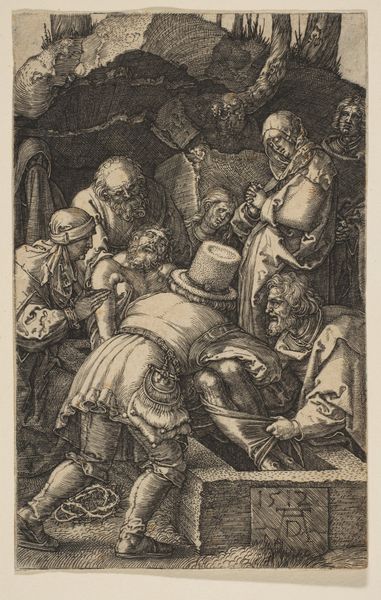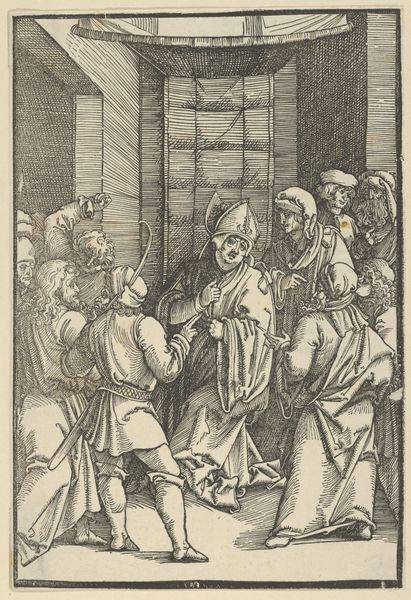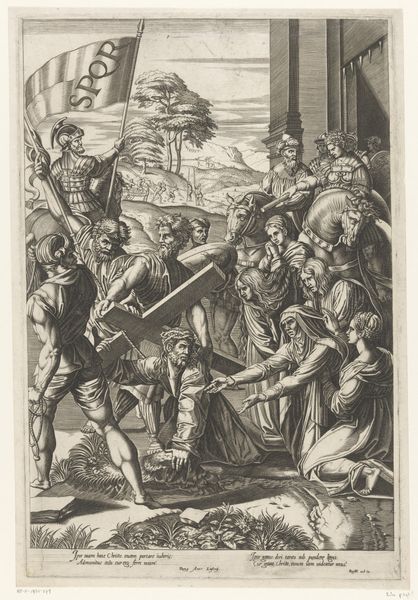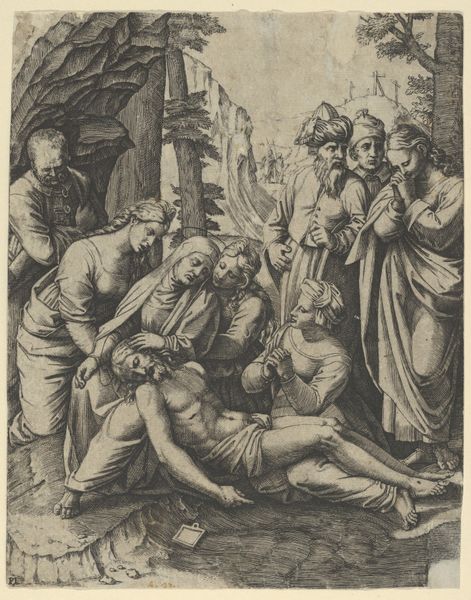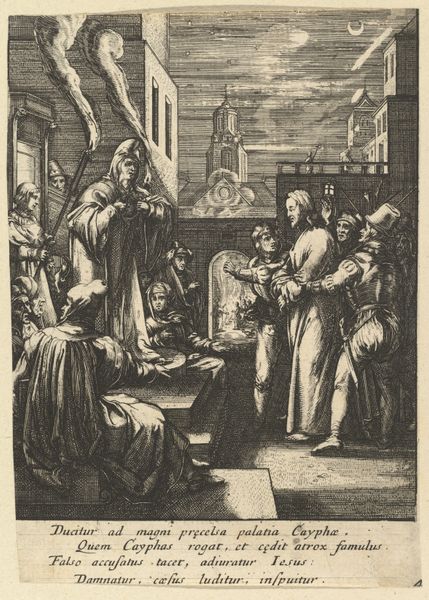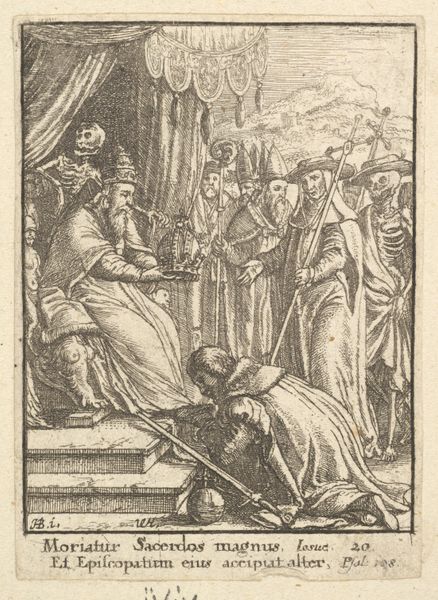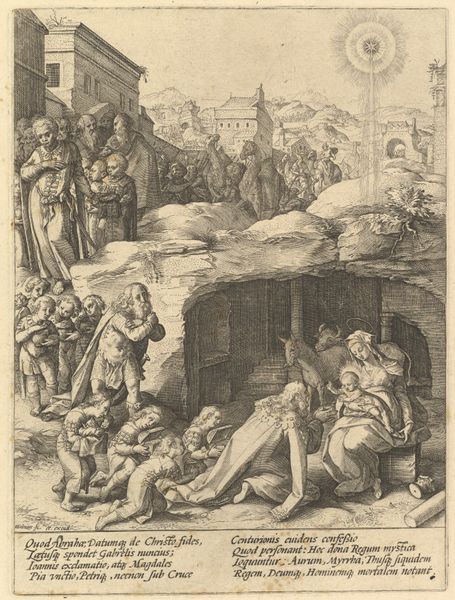
The Entombment, from "The Passion of Christ" 1610 - 1700
0:00
0:00
drawing, print, engraving
#
drawing
#
baroque
# print
#
figuration
#
history-painting
#
engraving
#
virgin-mary
#
christ
Dimensions: Sheet: 5 13/16 x 3 7/8 in. (14.8 x 9.9 cm)
Copyright: Public Domain
Editor: This is Nicolas Cochin’s engraving, “The Entombment, from 'The Passion of Christ'”, dating from sometime between 1610 and 1700. It's intensely moving— the composition is just saturated with grief. It makes you feel as though you are in attendance and overwhelmed with sadness. What jumps out at you when you look at this image? Curator: What grabs me immediately is how Cochin managed to imbue such deep sorrow using only line! Think about the context – religious works, especially during the Baroque, aimed to stir the soul. Look how Christ’s body, the angles, is gently lowered into the tomb while, to his right, his mother's despair radiates outward with its own visual language, she even melts toward his hand with a certain embrace as to suggest his spirit lingered. It's almost tactile, isn't it? Do you get a sense of the artist meditating on something incredibly emotional here? Editor: Absolutely. There’s almost a tangible sense of reverence. Like a captured moment of absolute human devastation, an end that promises hope beyond. Curator: Precisely! Consider also the theatricality inherent in Baroque art. The figures aren't just sad; they're performing grief. Those dramatic gestures, the downturned gazes, serve to invite us, the viewers, to share their sorrow. It is really captivating to me and asks us a very intimate request of what grief means as something collective rather than individual. Do you feel like the architecture aids this intimacy? Editor: I do now! The opening creates an arena. Almost as if this were all taking place on a stage! Curator: It is almost the beginning of the hero's journey. Now tell me, has anything changed after considering Cochin’s language for that stage? Editor: I never thought about black and white engraving having a color to portray grief. Thanks, I see it differently now. Curator: Yes! It feels as though one comes into your soul when considering just where light might stand within the language of collective sadness, the beginning is always present as if the loss never truly ends... very nice work Nicholas Cochin!
Comments
No comments
Be the first to comment and join the conversation on the ultimate creative platform.
